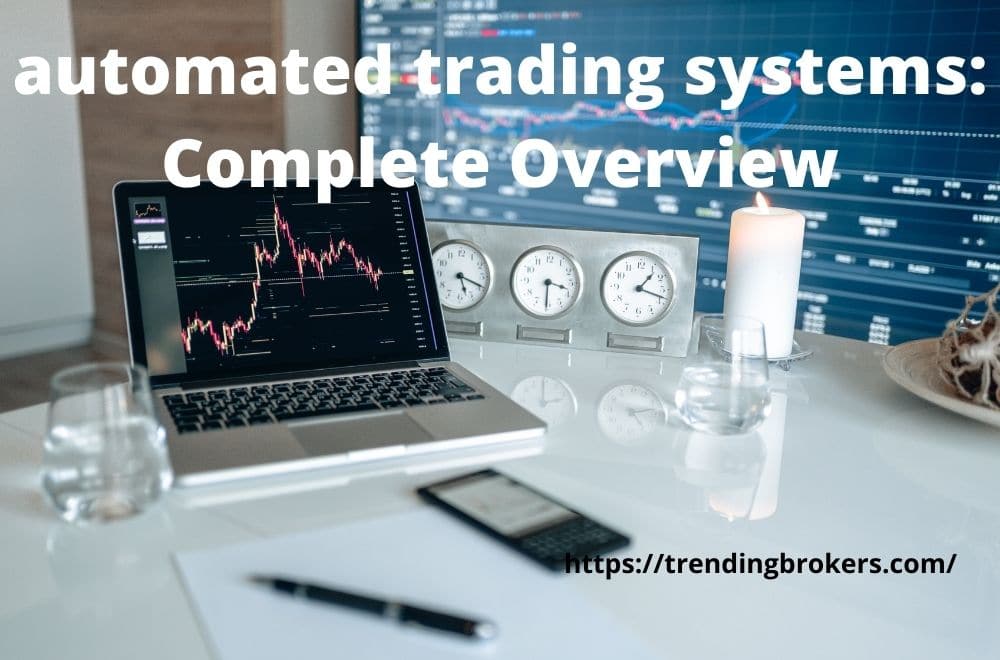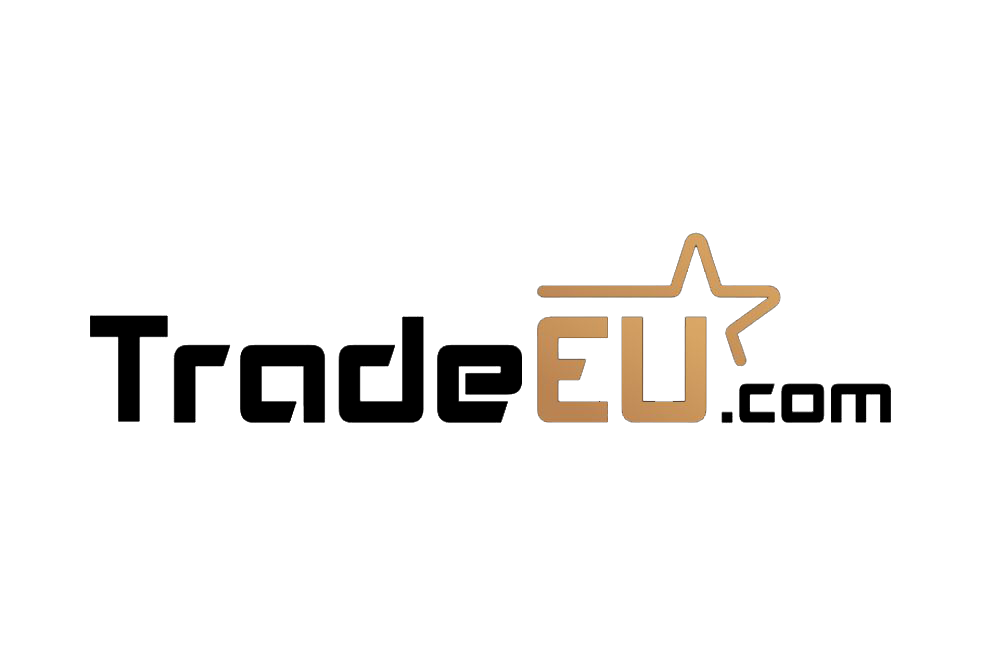Automated trading systems use algorithmic trading to buy/sell orders on markets/exchanges. A computer program may be customised to particular trading strategies. On the basis of these strategies, it places orders. There are predetermined guidelines programmed within algorithms.
Automated trading systems, also known by the monikers mechanical trading systems, system trading or algorithmic trading, permits traders to set up particular rules for both trade entries and exits that, once programmed, may be executed automatically via a computer. Truth to tell, a number of platforms report 70-80% of US stock exchanges’ traded shares come courtesy of automated trading systems.
Automated trading systems generally need the use of software linked to a direct access broker, any specific rules being written in the platform’s proprietary language. The TradeStation program uses the EasyLanguage programming language. Conversely, the NinjaTrader platform uses NinjaScript.
Setting up trading rules
Some trading platforms have strategy-building wizards permitting users to make selections from a list of commonly available technical indicators to structure a set of rules that may be automatically traded. The user may establish, for instance, that a long position trade can be entered once the 50-day moving average crosses above the 200-day moving average. Users may also input the order type. When the trade triggers, you may use the platform’s default inputs.
Many traders, nonetheless, go for programming their own custom indicators and strategies. The theory will frequently work closely with the programmer for system development. While this general;y needs a lot more effort than using the platform’s wizard, it permits much greater flexibility. Unsurprisingly, the results are more rewarding.
Post rule establishment, the computer may monitor the markets, looking to buy/sell opportunities on the basis of trading strategy specifications. Contingent upon specific rules, soon as a trade is entered, any orders for protective stop losses, profit targets and trailing stops are generated automatically. In fast-moving markets, the instantaneous order entry may imply the difference between a small loss and a devastating loss when the trade moves against the trader.
automated trading systems and EAs
An EA or trading robot is an automated trading program that operates on your computer, trading on your behalf in your account.
Automated trading system software bears several monikers. These may be Expert Advisors, program trading, robotic trading, automated trading or black-box trading.
Automated trading system software is a program that only takes trades with parameters that align with what’s written in the program.
An EA is based on a trading strategy. This implies that the strategy has to be breakable into rules that are programming-friendly.
Similar to other software, the EA will need periodic updates. Market conditions change. The updates will mirror the program’s relevance to the market and the programmer’s perspective. Only those who have had a good bit of experience with programming EAs can be trusted to supply you with those that are profit-friendly.
Don’t get hooked by the sales pitch
Even as a few EAs work, producing respectable results, there are any that are lack-lustre. A minor percentage of people trying to succeed at day trading could be among the fortunate ones.
Traders using EAs do not delegate trading wholly to EAs. The automated trading system software has to be monitored quite often. There are jarring effects when random unexpected events take place. That’s one instance where the trader has to intervene. Even on a day to day basis, you, as the owner of a set of EAs, will be called upon to adjust settings in tandem with market ups and downs.
Therefore, if you are being sold on a fully automatic EA, back out. There’s no such animal.
Full automation is a myth
Robotic traders that work hard at maintaining their programs implicitly know that they can do so only with expert help. The implication is that you have to know how to adjust the settings to allow the EAs to adjust to market flux or random events (like the sudden political outburst in early 2022 Kazakhstan).
Full emotional detachment is a myth
Automated trading system software does not free you from emotions. That’s because no EA is fully automatic. It is maintained by you. So when you plan to enter/exit positions, your emotions will invariably come into play.
Only a mature, seasoned trading hand can claim to be immune to sudden impulses. Even intermediate stage day traders cannot claim such wisdom.
Automated trading system software: advantages
- EAs do away with some of the psychological pressures of trading. Notwithstanding people using EAs to just intervene – intervention also involves stress or psychological pressure.
- EAs react swifter compared to humans. An EA does not hesitate when a trade signal appears. The reaction time for EAs is definitely faster.
- Automated software may monitor more markets than a human. At a given moment may effectively monitor a handful of markets. An EA can monitor hundreds of markets simultaneously.
- Once unleashed, an EA may find opportunities in any of the hundreds of markets it is programmed to monitor.
- EAs will take trades that suit a strategy. The trader might still have doubts.
- Another benefit of using EAs is that traders have pared down complicated strategies to simpler forms by using them. This brings all the benefits to strategy application that EA usage implies.
- One distinct advantage of EAs is that they do let you off for long durations during which no maintenance is needed. Therefore, there are times when EA trading is more convenient than manual trading.
- Automated trading and, by extension, EAs show if a given trading strategy is feasible. Testing EAs is manageable. The opportunity for testing is afforded by exposure to different markets. The outcome of such testing lets you know if an EA is valid in a given market under certain conditions. This permits constant upgrading of EAs , too.
Automated trading system software: disadvantages
- It is a lot of work to create and maintain an EA. Manual intervention is called for from time to time. The implication is that automated trading is not entirely hands-off. For instance, in case of volatility increases more than is normal, position size may have to be manually adjusted.
- Programming skills may be a given. Even in the case of buying a program, most are not equipped with long term support and updates. When you do not know how to program the EA to make it go in sync with the markets, the EA will turn a dud.
- Buying someone else’s EA implies importing that developer’s perspectives on trading strategy. These may or may not be compatible with the views of the EA buyer.
- Over-optimisation takes place when EAs are programmed for specific scenarios. The implication is that they may narrow down the ‘specialisation’ to the extent that such EAs may be useless in most scenarios.
Automated trading system strategies: deep waters
By now we have understood that traders with the ability to program have a definite edge on those that cannot. So, naturally, you can copy trade or consult great brokers like PrimeFin, ABinvesting, and InvestBy. However, it is obvious that the fruits of Independence will go to traders who have all required skills under the belt.
Nothing daunted, however, we take the plunge.
There are any number of online resources that can give you the simpler outlines of Automated trading system strategies. However, when the trader seeks diving into deep waters, he has to look at more complex academic offerings. We call these ‘academic’ not to criticise, but to underscore that you will need practical experience for the realisation that these academic discussions have real-world applications. It harms you little, in the meantime, to go thru the academic content of Automated trading system strategies.
The major disadvantage of academic strategies is that they may frequently be out of date, need obscure and inexpensive historical data, trade-in asset classes that are not liquid, or fail to factor in slippage, fees or spread. It may also be unclear if the trading strategy is to be carried out with market orders, limit orders, or stop losses. Therefore, it is essential to reproduce the strategy yourself as best you can, backtest it, and add real-world transaction costs embracing varied asset classes.
Recommended are
- Journal of Investment Strategies;
- Journal of Computational Finance;
- Mathematical Finance.
Automated trading system strategies: forming some of your own
Automated trading system strategies that are custom-made for you? Who knows your trading goals more than you yourself? Let’s try our hand at quantitative strategies:
- Market microstructure – you may use market microstructure for higher frequency strategies. In other words, you have to develop an understanding of Order Book dynamics to be profitable. Varied markets will have diverse tech limitations, market participants, regulations, and constraints – all exploitable per particular strategies. Retail traders will generally find it challenging to be competitive in this arena. Not hard to understand since your competition will include big, well-capitalised hedge funds with strong tech capabilities.
- Fund structure – Pooled investment funds, like pension funds, private investment partnerships, mutual funds, and commodity trading advisors, are restricted both by own heavy capital reserves and stiff regulation. Nevertheless, specific, consistent behaviours may be exploited by more agile people.
For example, large funds have capacity constraints owing to their size. Stands to reason, if they need to swiftly offload/sell a number of securities, they will need to stagger it to avoid moving the market. Complex algorithms may take advantage of this. The process is called fund structure arbitrage.
- Machine learning/artificial intelligence – machine learning algorithms are more common now than heretofore. For asset path p[rediction and trading strategy optimisation, you may need nonlinear function matchers and optimisation routines. A background in this area gives you insight into how specific algorithms might be applied to given markets.
Monitoring these sources on a weekly or even daily, you are setting yourself up to get a consistent list of strategies from various sources. The following step would be determining the rejection of a large subset of these strategies to minimise wasting your time and backtesting resources on strategies that are most possibly profitable.
Once you are determined that you understand the basic principles of the strategy you need to decide if it fits with your personality profile.
There are some investors that are less risk-averse, less of the Doubting Thomas, than others. Notwithstanding the fact that we try and do away with as much cognitive bias as possible, biases always creep right in. traders need a consistent, dispassionate means thru which to evaluate strategy performance.
Automated trading system strategy: suitability criteria
- Methodology
You have to decide if the strategy is momentum based, mean-reverting, directional, or market-neutral. Does the strategy depend on complex statistical/machine learning techniques that are more than merely ‘challenging’? Do these techniques bring a considerable quantity of parameters, precipitating optimisation bias? Is the strategy possibly able to resist a regime change (or new regulations)?;
- Sharpe ratio
The Sharpe ratio features the strategy reward/risk ratio. It quantifies how much return you may achieve for the volatility level the equity curve tolerates. Traders have to decide the period, and frequency volatility and these returns are measured over. A higher frequency strategy will call for a greater standard deviation sampling rate, ut a relatively brief overall time period of measurement. ;
Does the strategy need considerable leverage to be profitable? Does the strategy call for the use of leveraged derivative contracts – options, futures, swaps – to make a return? These leveraged contracts may have heavy volatility characteristics, precipitating margin calls. Are you ready for such volatility, with the amount of capital and the sort of temperament that demands? ;
- Frequency
The strategy frequency is closely connected to your tech stack, the Sharpe ratio, and general transaction cost level. Higher frequency strategies demand more funds, are more complex and challenging to implement. nonetheless, considering your backtesting engine is cutting-edge and bug-free, they will frequently have higher Sharpe ratios;
- Volatility
Volatility is related to strategy risk. Underlying asset class higher volatility, if unhedged, frequently leads to equity curve higher volatility. Some strategies may have more pronounced downside volatility ;
- Win/loss, average profit/loss
Strategies will differ in their win/loss and average profit/loss characteristics. Even if the number of losing trades exceeds the number of winning trades, one may have a very profitable strategy. Momentum strategies have this pattern, given their reliance on a few ‘big hits’ to be profitable. ;
- Maximum drawdown
The largest overall peak to trough percentage drop on the strategy equity curve is called maximum drawdown. Owing to a string of not a few incremental losing sales, momentum strategies suffer from extended drawdown periods. You will be deciding your maxim drawdown tolerance ;
- Parameters
Your Automated trading system strategy could ask for a large number of parameters. Every extra parameter that strategy needs leaves it more vulnerable to optimisation bias ;
- Benchmark
Close to all Automated trading system strategies are measured against a given performance benchmark. The benchmark is generally an index featuring a large underlying asset class sample that the strategy trades in.
Conclusion
There is much truth to the general perception that Automated trading systems remove emotion, enforce discipline, and increase efficiency and accuracy. Conversely, as is rightly pointed out, Automated trading systems need oversight, past performance cannot predict success in future, and the a large possibility of mechanical/connectivity failures. You also need a deep level of trading awareness to make full use of automated trading.
We recommend the excellent services of PrimeFin, ABivesting and InvestBy in the area of Automated trading systems management.


